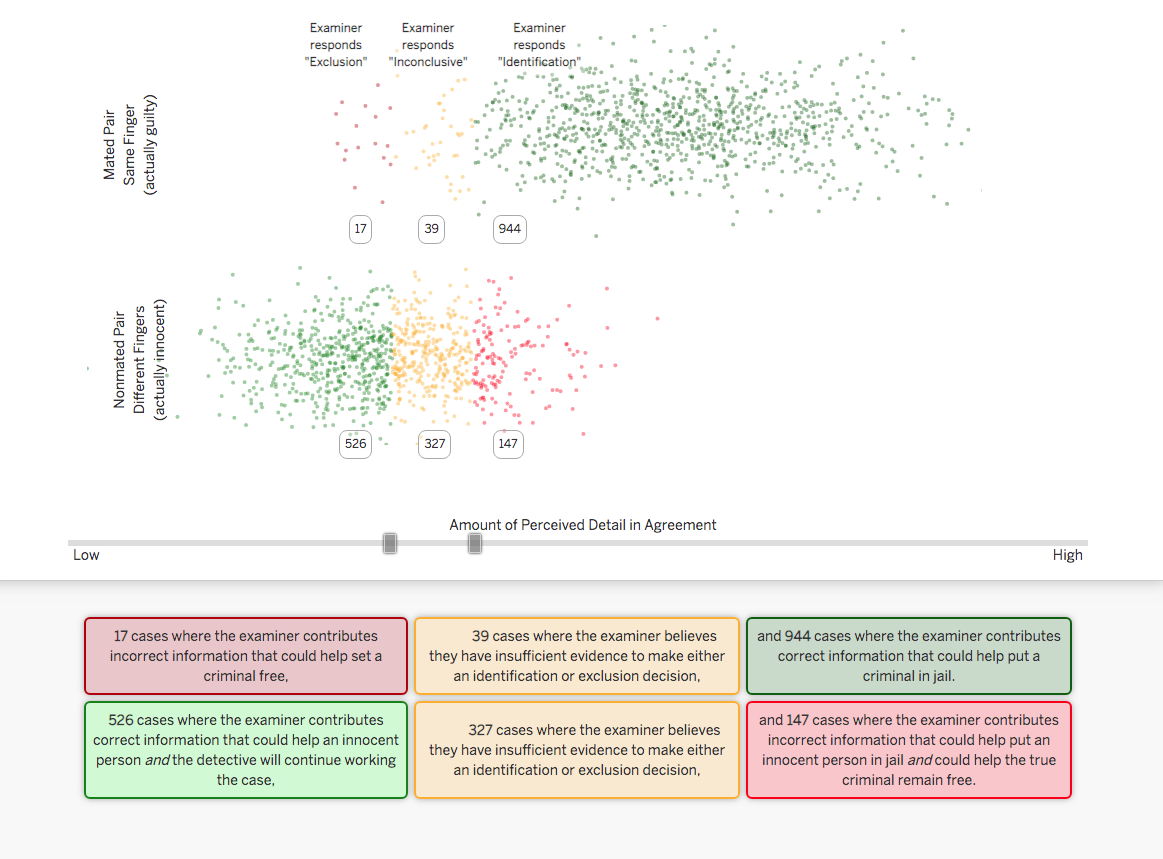
Optimizing Decision Thresholds
Forensic scientists make decisions about evidence, and communicate that evidence to a consumer such as a detective or a jury. Somehow, the latent print community has coalesced around a decision threshold that according to error rate studies produces very few erroneous identifications, but a fair number of erroneous exclusions. Is that ok?
In this project, we set out to measure what examiners and the general public consider to be appropriate locations for the identification and exclusion decision thresholds. Normally these exist only in the mind of the examiner, but we can make them real by looking at the outcomes that can occur when a particular set of thresholds is adopted.
You can view a demonstration of this by following this link. This will take you to a page that has a short video (skip this if you want) and then a visualization that explores a Taboo Tradeoff. This tradeoff happens when you change the decision threshold to put more guilty people in jail, but find that it also puts more innocent people in jail. Try it yourself and see what you are comfortable with!
If you want to create your own link, or try out different values, here is a link to the configuration page: http://go.iu.edu/2bpQ
Mannering, W. M., Vogelsang, M. D., Busey, T. A., & Mannering, F. L. (2021). Are forensic scientists too risk averse? J Forensic Sci. doi:10.1111/1556-4029.14700 pdf
Conclusions
We found that examiners and members of the general public differ in terms of where they place the Identification decision threshold. Interestingly, members of the general public were less conservative than examiner (not politically, but in terms of their decision threshold placement). This means that they are more willing to tolerate innocent persons in jail than examiners are, because it leads to more guilty people in jail.
Note that this research is really designed to start a conversation in the community about the role of examiners in deciding where the Identification decision threshold should be. If you have thoughts about the project or questions, email Tom Busey.